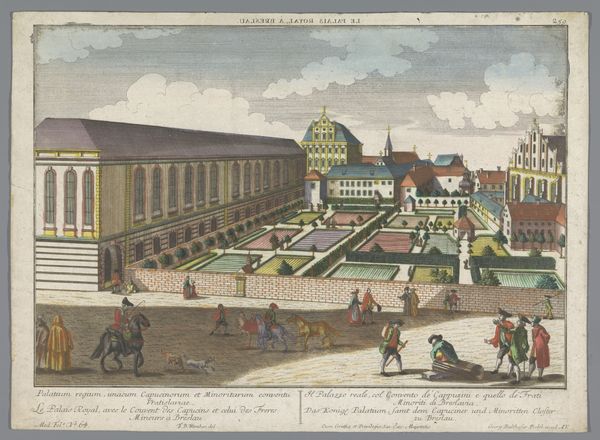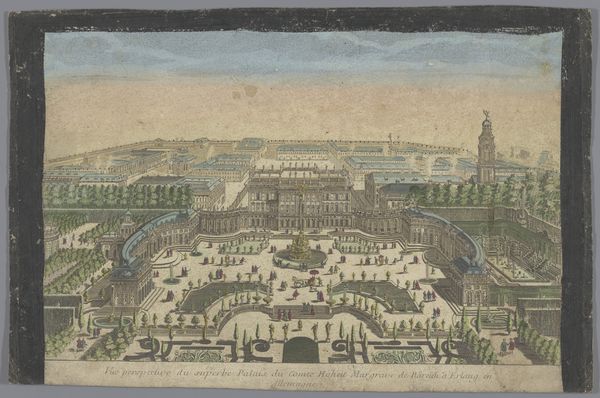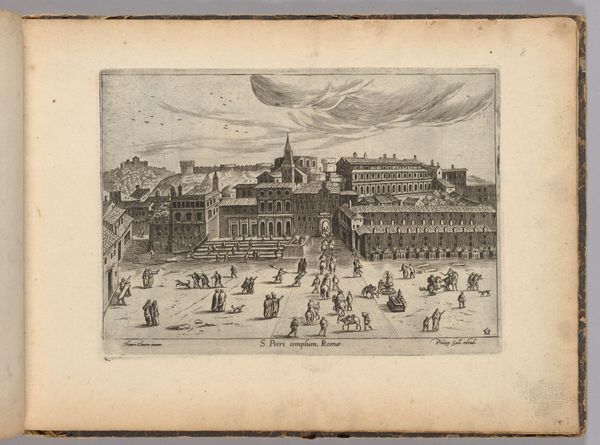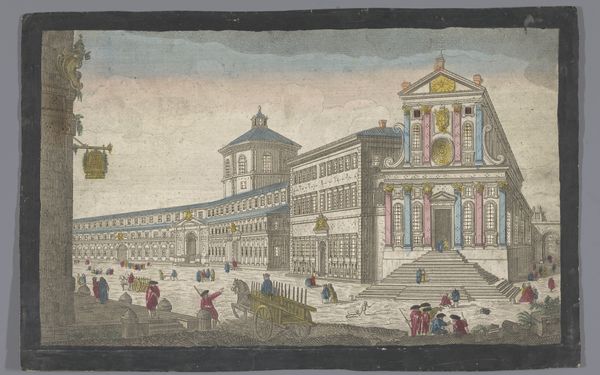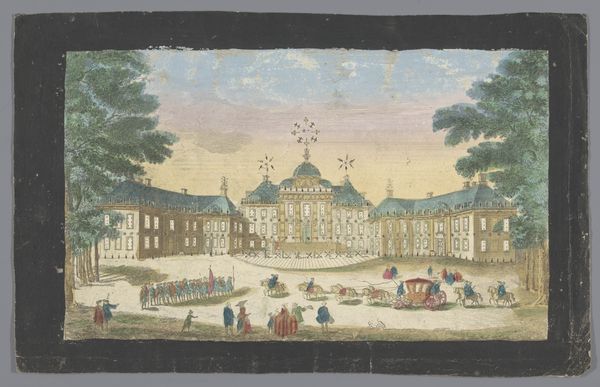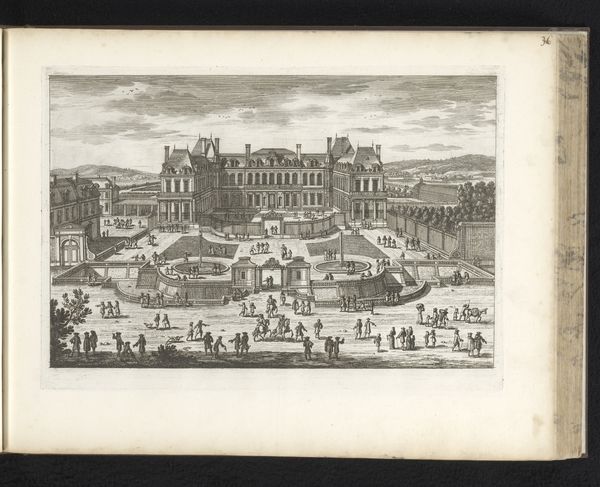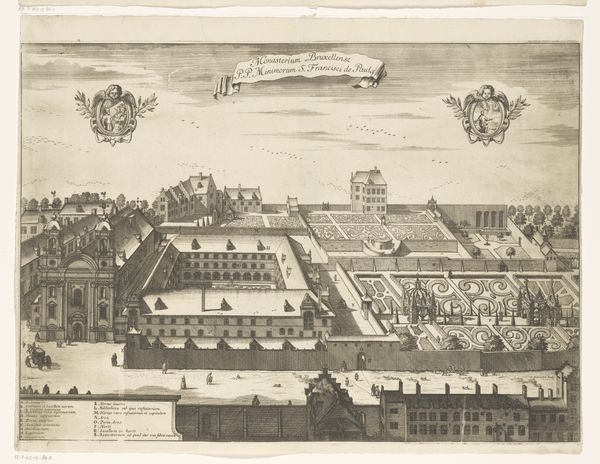
Gezicht op het Koninklijk Paleis en het klooster van de minderbroeders kapucijnen te Wroclaw 1742 - 1801
0:00
0:00
georgbalthasarprobst
Rijksmuseum
Dimensions: height 302 mm, width 448 mm
Copyright: Rijks Museum: Open Domain
Curator: Here we have a fascinating cityscape, “View of the Royal Palace and the Monastery of the Capuchin Friars in Wrocław,” an artwork created between 1742 and 1801. Georg Balthasar Probst is credited with this mixed media work, now held at the Rijksmuseum. Editor: Wrocław…just the name itself evokes a certain melancholic grandeur. It looks so precise and orderly, almost too perfect. I'm immediately drawn to the miniature figures milling about. They seem utterly oblivious to the grand design, caught up in their daily dramas. It’s as if the city is a stage. Curator: That’s interesting. I see a carefully constructed view intended to communicate power and control, not only through the buildings depicted but also through the medium itself. Probst utilizes watercolor, drawing and printmaking techniques here, each bringing different production possibilities and material implications for distribution to different audiences. The hand coloring probably made each impression unique. Editor: Indeed. There's something so...rigid about it. Maybe that's the baroque influence you mentioned earlier? And yet, there's a tenderness in the way the colors soften the edges, especially in those hazy skies. It's like a memory trying to hold on. Curator: Well, baroque art did serve as propaganda for the aristocratic powers. We see that formality expressed here but I would add it offers evidence of printmaking innovations that developed from increasingly urban manufacturing centers. We must consider access and readership in our viewing. How were images like this consumed by different audiences? Editor: Good point. For me it brings questions about craftsmanship, too. I’m always curious about the labor behind it all—the anonymous hands who created it versus its legacy. It seems to encapsulate an era caught between ambition and decay, doesn’t it? I think it shows this duality effectively through perspective, too— both near and far existing at once on a plane. Curator: It really does capture that liminal space, and I believe it exemplifies how prints played a crucial role in shaping, reflecting, and mediating social perceptions of the time. Editor: Yes, an odd harmony and now as we depart this image of the Polish cityscape, a slight shift, like coming into tune from discordant hums, to understanding it fully.
Comments
No comments
Be the first to comment and join the conversation on the ultimate creative platform.
